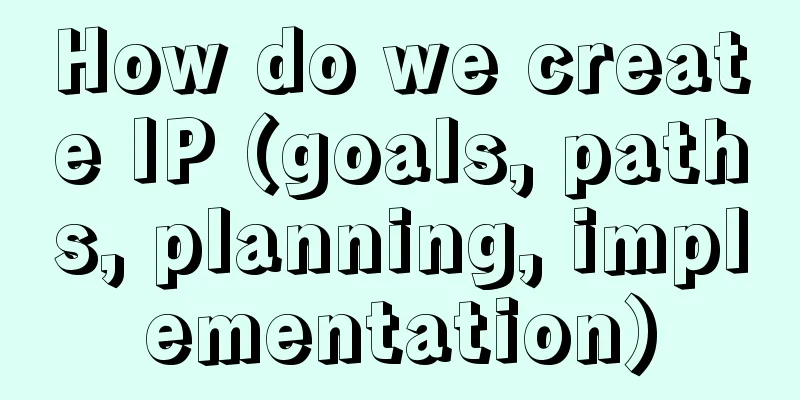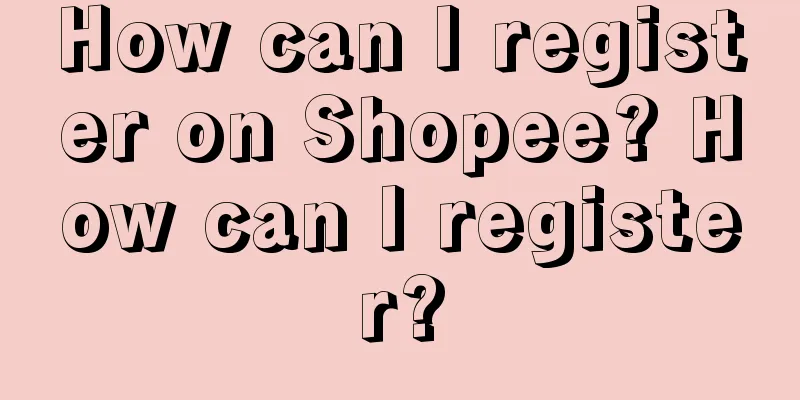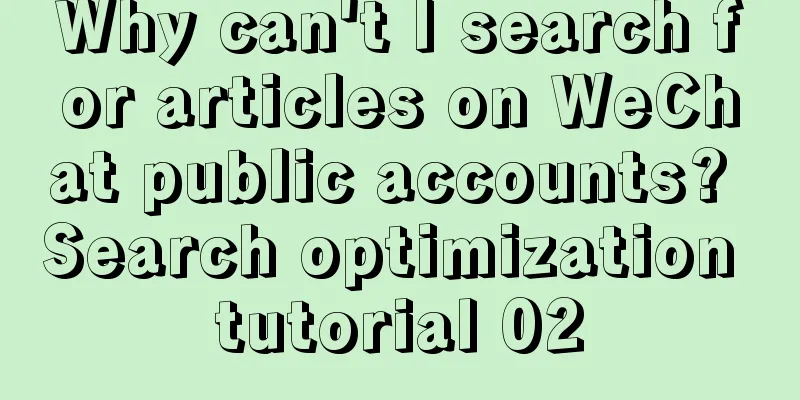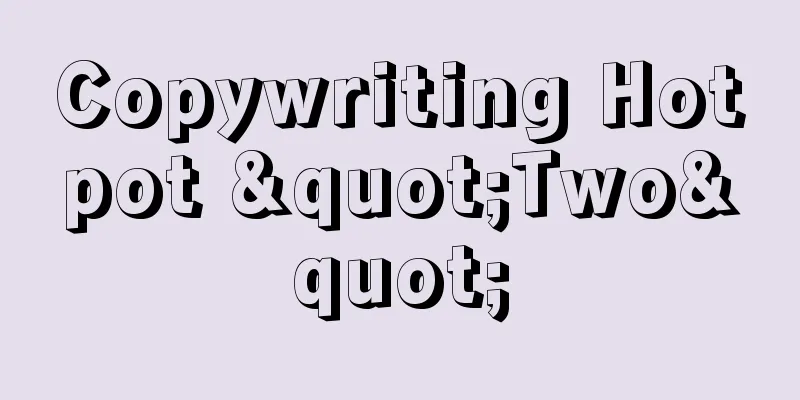How do we create IP (goals, paths, planning, implementation)

1. The four dimensions of IP: strategic layer, content layer, communication layer, and presentation layerWhen we talk about IP, we often start with the presentation layer. Everything we can see, such as scenes, costumes, props, etc., can be imitated. In essence, the brand's No. 1 thinking about IP should be higher and deeper. If you want to see more, you need to go to a higher level. To this end, we divide IP into four dimensions. The first is the strategic level, that is, what is the purpose of our IP, and we must always think around the purpose. It is certain that monetization is not the purpose, but it is a natural thing and a product of the IP process. However, IPs that are solely for the purpose of monetization are not bad, but they are not long enough. An IP must be established, stable, and long-lasting. This requires us to clarify the purpose from a strategic level. In other words, the question that needs to be answered at the strategic level is: how can an IP become the first? It can be the first in a sub-category or the first in a certain field. Finding the first is to amplify the value of differentiation. For example, Cao Yunjin does food broadcasting and shop exploration. He becomes the best shop exploration person in crosstalk and the best talker in shop exploration. This is the advantage of differentiation - finding the first. The content layer is centered around strategy. If the strategic layer answers the question of why we do something, then the content layer answers what we should do. What an IP should do is determined by the first differentiated value determined by the strategic layer. For example, the IP's job description, personality, and interests. These are not arbitrary, but targeted. From finding the first step (outputting differentiated value) at the strategic level to being targeted at the content level, the next step is the communication level. What do we rely on to spread? Language, image, and speech. That is, language output, image presentation, and speech shaping around differentiated value. Finally, there is the expression layer. In a fragmented media environment, how can an IP stand out? First, it must have a striking quote; second, it must have emotional stickiness and a story; third, it must have a banner of its own, a work - only in this way can it stand for a long time, stand firm, and stand for a long time. That is: strategic layer, content layer, communication layer, presentation layer relationship: why do it, what do it, how to do it, what to do Take the previous IP Luo Zhenyu as an example:
From strategy to content, from communication to performance, if we only talk about IP at the formal level, but ignore the content level, or even the strategic level, then we are really just doing IP for the sake of IP. The result is that IP is made into a clown, saying whatever is popular today, fighting for popularity and traffic, but finally finding that something seems to be wrong. So, what do we mean by IP thinking? It is just two idioms:
1. 4 thoughts
——Consistently, centered around strategic objectives 2. Three-stage theory: start-up stage, growth stage, and maturity stageFrom 0 to 1, we divide IP creation into three stages: start-up, growth, and maturity. Different stories should be told at different stages. If the IP story is told well, the IP life cycle will last a long time. As an IP for an enterprise, in the start-up phase, you need to tell the entrepreneurial story, convey the mission, vision, and core is to convey values; in the growth phase, the product story: convey perseverance and persistence, the core is to be a product experience officer; in the mature phase, the industry story: stand at the forefront and plan for the future. How to explain it specifically?
2. How to create a founder IP, taking Ms. L as an exampleBackground: Ms. L was born in the 1980s and is a genuine Harvard female student After graduating from Harvard, he has been focusing on family financial management. He has 20 years of professional experience. He works for a top domestic financial weekly and has his own column. He is a special guest on a certain satellite channel's financial management program (one episode per week) and provides financial training for the second generation of his family. He is well-known in his small circle, professional but not clingy, and leads a comfortable life. After listening to this background information, we still have to go back to the beginning and answer four questions: namely, the relationship between the strategic layer, the content layer, the communication layer, and the presentation layer: why do it, what do it, how do it, and what do it do? First, start from the strategic level At the strategic level, Ms. L builds her personal IP, and the word she wants to occupy or represent is wealth inheritance, and her target is the family business. The goal is to make Ms. L the first person who comes to mind when mentioning family wealth inheritance - this is the beginning and end of the thinking, layout, strategy, and action of building a personal IP. After clarifying the strategic goals, we need to build Ms. L's content layer (career, personality, interests) around the category word (family wealth inheritance). You need to be able to deconstruct and reconstruct (occupation, personality, interests) information from the perspective of your target customers. When you mention the term family wealth inheritance, what positive associations will your target customers have with (occupation, personality, interests).
In other words: A person with a clear conscience is not afraid of his shadow. Career, personality, and interests are the clear conscience; language, image, and speech are the shadow. Let's give another example to facilitate a broader understanding. When you mention a fitness club founder, what positive associations do you have with his career, personality, and interests? For example: having a more masculine personality, liking extreme sports, lifting weights every day regardless of spring, summer, autumn or winter, driving a jeep, wearing Arc'teryx, often showing off attractive abdominal muscles on WeChat Moments, etc. - this is what psychology calls stereotypes.
Looking back now, as long as I am clear at the strategic level and become the first female expert in family wealth inheritance, the following content, communication, and presentation will come naturally. The rest is just to organize resources and build advantages according to the target consumers' cognition. 1. Starting point: Start with the concept and occupy the root wordRegarding the concept of family wealth, first of all, most people have a clear concept of family, but a vague concept of clan. The essence of business is definition, and the core ability of an entrepreneur is the ability to define. Family wealth inheritance includes two terms: family and wealth. Nouns constitute our understanding of the world, so you must be careful of noun barrier. Therefore, the term "family wealth inheritance" may be too abstract. You (referring to Ms. L) must first define what family is and what counts as wealth. If you define this concept, it is yours; if you don't define it, it belongs to someone else. How to define it? Essentially, the best way is to add the word "new" in front of it. Then you can be everlastingly new - the inheritance of wealth of a new family. Where there is new, there is old. Only by breaking the old can the new be established. In this way, the boundary is immediately revealed. You must establish an opposite, break the old, and then there will be a new one. If the new does not come, the old will not go.
What is new family wealth? Once you define it, the whole world belongs to you. With the new concept, we can divide wealth into "old" money and "new" money. With the concept of new money and old money, we can tell stories for 100 years. The definition of a word is the definition of a word; the definition of communication is the definition of communication; the definition of marketing is the definition of marketing.
Starting from 1949, if you look at the history of family, wealth, and inheritance, and weave history into stories, as long as the story is told well, no one will be able to doubt it.
For this reason, Ms. L: Your resources, background, expertise and connections are all very good, but in the past few years you have not focused these resources, background, expertise and connections on one point, so many things are done in a scattered and point-by-point manner without lines, surfaces and substance.
Our benchmarks are Wu Xiaobo, who is engaged in family wealth inheritance, and Yang Lan, who is engaged in family wealth inheritance. The method is: interview the top 10 families you know, and this great cause can be achieved. At this time, a great mission is about to emerge - to help the new family wealth for 200 years and pass it on to 5 generations
2. Key points: goals, paths, planning, and implementationAn IP, a popular article, a white paper, a course, a book, build fame in the public domain, and close the business by offering large and small classes in the private domain.
Having written this far, I think most of my friends can continue with the specific operations, such as: public accounts, video accounts, Douyin, such as: communities, platforms, endorsements. Many things are difficult at the beginning, and everything is difficult at the beginning. Once a consensus is reached on the problem and the path is clear, the planning must be focused (five ones, 5 allin 1). Author: Houshan Keju, Source: WeChat public account "Lao Gao Business and Brand" |
<<: Read pure love on Xiaohongshu, and identify scumbags on Douyin
>>: Why is the moat built by good content so solid?
Recommend
How to publish products on Wish? What products are easy to sell?
As a world-renowned e-commerce platform, Wish'...
What is the use of EIN for Amazon stores? What are the advantages?
When people open a store on Amazon, they usually o...
Will “grass-planting live streaming” be a turning point for live streaming e-commerce?
This article starts with Dong Jie's popular Xi...
I opened an AI online store and sold out my "one cent" business
AI service is an industry with creative rules, emo...
Achieving growth against the trend amid internal and external troubles: Bosideng "renews the old brand"
The times are developing rapidly, and traditional ...
How do ancient celebrities who “traveled through time” to become bloggers navigate the Internet?
These ancient bloggers reinterpret historical figu...
How to set up a payment account on Shopee? Which payment account should I choose?
Shopee platform is one of the most promising platf...
To keep workers from breaking down, they must rely on the emotional value of ChatGPT
Nowadays, artificial intelligence is developing ra...
Can I still have traffic after I graduate from Shopee? What are the consequences?
After successfully registering a Shopee store, you...
How to apply for Amazon's influencer program? Where to find influencers?
Amazon Influencer Program is also called Red Peopl...
Is Lazada's weight based on volume or weight? What is Lazada's delivery process?
Merchants who open stores on the Lazada platform w...
Is Douyin Shelf worth doing?
Douyin has invested 10 billion yuan to support e-c...
How did I sell sleeping bags on Xiaohongshu, a niche and unpopular product? | A trader’s story
With this trick, we got 5 million natural exposure...
Yesterday, Station B decided to cancel the display of playback volume
Some time ago, the news that B station cancelled t...
Does Lazada's customer service speak Chinese? Where is the entrance to the customer service?
Lazada customer service needs to handle customer o...









